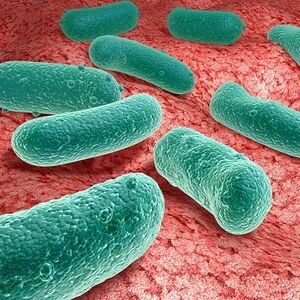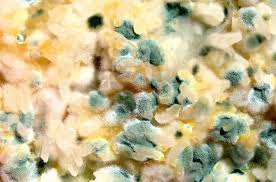ADHD and the Gut: Cause of ADHD Part 1: ADHD in the gut-brain axis series

Exploring the Cause of ADHD
In this next article on the gut-brain axis, we address ADHD and the gut this week. Recent research has established a strong link between the gut and the brain. The gut-brain axis regulates brain function and behavior (Chunlong Mu, 2016) and the gut is implicated as a cause of ADHD.
The gut-brain axis plays a critical role in many neurological disorders. It affects neuropsychiatric disorders like anxiety, depression, schizophrenia, dementia and autism (Kim YK, 2018). It also affects neurodevelopmental disorders in children including ADHD, autism, learning disabilities, intellectual developmental disorder, motor disorders, and specific learning disorders (EPA, 2015).
In this article, we will explore the link between ADHD and the gut brain axis.
You may have heard the name ADD, or attention deficit disorder. This is an out-of-date term. It was previously used to describe people who have problems paying attention but aren’t hyperactive. Instead of using the term ADD, such a person is now said to have the type of ADHD called predominantly inattentive.
The term ADHD became official in May 2013, when the American Psychiatric Association established the diagnostic criteria for different mental health conditions in the ‘Diagnostic and Statistical Manual of Mental Disorders, Fifth Edition (American Psychiatric Association, 2013).
Some facts about ADHD:
- ADHD is one of the most widespread neurodevelopmental conditions (Ming X, 2018).
- The Center for Disease Control and Prevention (CDC) reports that 11% of all children (1 million) in the U.S. aged 4-17 have been diagnosed with ADHD in 2016. This represents a 43% increase since 2003. (Centers for Disease Control and Prevention, 2018).
- In 2015, the CDC said the total number of Americans, adults and children, with ADHDcontinues to rise from 7.8% in 2003 to 9.5% in 2007 and to11% in 2011 (Centers for Disease Control and Prevention, 2018).
- ADHD rates are growing. Figures from 2003 to 2015/ 2016 show increases of 43% in children and 41% in all Americans with ADHD (Centers for Disease Control and Prevention, 2018).
- The causes of the disorder remain unclear (Ming X, 2018). We do have some ideas on causes and they will be discussed later in this article so please do read on for information on causes of ADHD.
- Boys have a higher incidence of ADHD than girls. In 2015-2016, Children and Adults with ADHD (CHADD) reported that 14% of children with ADHD were boys vs. 6.3% who were girls (Children and Adults with Attention-Deficit/Hyperactivity Disorder, 2019).
- Co-occurring conditions are quite common in children (2-17 years of age). 63.8% of children with ADHD had at least one co-occurring condition: (Children and Adults with Attention-Deficit/Hyperactivity Disorder, 2019)
- 51.5% had behavioral problems
- 32.7% had anxiety problems
- 16.8% had depression
- 13.7% had autism spectrum disorder
- 1.2% had Tourette syndrome
- 1% (of adolescents) had a substance abuse disorder
To Read About Blog Topic, Scroll Down
Want To Work With Our Clinic?
Do you have a chronic or mystery illness that no one has been able to help you with? Are you simply wanting to re-connect with a healthier version of yourself? It’s Time To Finally Feel Better!
Common symptoms of ADHD are:
- difficulty focusing and concentrating on tasks
- being easily distracted
- forgetting to complete tasks
- interrupting people while they’re talking
- having difficulty sitting still
The National Institute of Mental Health further characterizes ADHD into three types; Inattention, Hyperactivity and Impulsivity: (National Institute of Mental Health, 2019)
- Inattention: being easily sidetracked from the task at hand, lacking persistence, difficulty sustaining focus/concentration
- Hyperactivity: appearing to move constantly, including when it is not appropriate, excessively fidgeting, tapping or talking, extreme restlessness or wearing others out with constant activity
- Impulsivity: acting in a rash manner without first thinking about one’s actions, a desire for immediate reward or inability to delay gratification, being socially intrusive and excessively interrupting others
It is clear that the incidence of ADHD is growing. Part of this increase can be potentially attributed to better diagnoses. But in Functional Medicine (FM) we always want to dig deeper to get to the root causes and to understand why ADHD is on the rise. So what is going on?
A cause of ADHD is that there is an underlying metabolic and functional disorder in the brain. There are abnormalities in the neurotransmitter (NT) system in the brain, triggered by an imbalance of the neurotransmitters dopamine and noradrenaline (All About ADHD). These two NTs play an important role in the transmission of stimuli in nerve cells. When these neurotransmitters are out of balance, faulty information processing will result in the affected areas of the brain (All About ADHD).
With ADHD, the parts of the brain that are responsible for control and coordinating information processing are particularly affected (All About ADHD). This negatively impacts a person’s ability to concentrate, as well as their perception and impulse control (All About ADHD).
Cause of ADHD:
No single risk factor explains ADHD. It is actually more accurate to say “causes” of ADHD rather than Cause of ADHD. Both inherited and non-inherited factors contribute and their effects are interdependent. (Thapar A, 2013)
In conventional medicine, it is widely accepted that ADHD is an inherited condition, although the precise cause or causes remain unclear. Studies have shown that children with a parent diagnosed with ADHD have a greater than 50% chance of having ADHD (Ming X, 2018).
However, only a small number of genes have been reported to have any effect in predicting ADHD and that effect is relatively small (Ming X, 2018).
The more likely explanation is that ADHD is due to a combination of genetic and environmental epigenetic factors. These environmental risk factors and potential gene-environment interactions increase the risk for the disorder (Banerjee TD, 2007). Environmental factors can be ‘inherited’. Growing up in and living in the same household means people – whether children or parents – are sharing their environment and are likely to be experiencing the same environmental factors.
Environmental factors influencing and potentially increasing the risk of developing ADHD are: (Banerjee TD, 2007) and (Ming X, 2018):
- food dyes and additives in the diet
- lead contamination and exposure to other heavy metals
- micronutrient and mineral deficiencies
- cigarette and alcohol exposure
- maternal smoking during pregnancy
- low birth weight
- perinatal stress
- neurotransmitter disruption
It is estimated that between 10% and 40% of the difference in heredity may be due to environmental factors (Ming X, 2018). Yet these known environmental factors do not account for all of the difference in heritability (Ming X, 2018).
More recent research into causes has highlighted the role of the gut, and specifically the microbiome-gut-brain axis, in ADHD (Ming X, 2018) and (Cenit MC, 2017). Please see our recent article on anxiety and the gut-brain axis for a full explanation of the microbiome-gut-brain axis.
In ADHD, it has been found that:
- Dysbiosis, or an altered gut microbiome, and specifically increased Bifidobacterium species of gut bacteria, exist in patients and may contribute to the clinical expression of ADHD (Ming X, 2018).
- Dysbiosis is associated with gastrointestinal symptoms, such as constipation, diarrhea, abdominal pain, and flatulence. A number of studies have noted an increase in these gastrointestinal symptoms in neurodevelopmental disorders and specifically in ADHD (Ming X, 2018).
- Dysbiosis can lead to gut inflammation, due to a large amount of pro-inflammatory microbes. This can cause increased intestinal permeability and inflammation, allowing microbes into circulation through a leaky gut, which may lead to low-grade systemic inflammation and immune dysregulation (Ming X, 2018).
- This low-grade systemic inflammation may gradually damage the blood–brain barrier and possibly cause the neuroinflammation seen in ADHD (Ming X, 2018).
- Diet influences ADHD symptoms by affecting the gut microbiome through its impact on brain functioning and behavior. One proposed mechanism for these effects of gut microbiota is through their ability to synthesize neurotransmitters (NTs) and their precursors (Aarts E, 2017). Precursors of the NTs involved in ADHD (dopamine, noradrenaline and serotonin) are produced by the gut microbiota. Their precursors are amino acids (phenylalanine, tyrosine and tryptophan) which may pass through the gut lining, enter into circulation, and cross the blood-brain barrier (Aarts E, 2017). Once in the brain, they could potentially influence NT production. As a result, differences in gut bacteria may impair brain function and behavior relevant to ADHD (Aarts E, 2017). In fact, a higher amount of the gut bacteria Bifidobacterium in babies has been associated with increased risk of developing ADHD in childhood (Aarts E, 2017).
In conventional medicine, treatment used for ADHD is medication, behavioral treatment and/or a combination of medication and behavioral treatment. The most commonly prescribed medication for ADHD is Ritalin. Ritalin is not a cure for ADHD but it can improve concentration, reduce impulsivity and promote calmness (NHS, 2018). It does have side effects such as an increase in blood pressure and heart rate, difficulty sleeping, loss of appetite, headaches and stomach aches (NHS, 2018).
One recent study has just come out with findings that Ritalin changes the brain structure in children with ADHD (Reneman D, 2019). These effects were not found in adults with ADHD in the same study. The scans of the children’s brains showed changes in their brain structure in a short period of 4 months on Ritalin (Reneman D, 2019). These differences were in the left hemisphere of the brain and involved the process of coating nerve fibers, such as nerve fiber density, size and myelination (Reneman D, 2019). Patients can be on Ritalin and other medications for years, despite there being little knowledge about its long-term effect on the brain.
In Functional Medicine, we like to dig deeper and look for the root cause(s). As there is no single cause of ADHD, in FM the approach we take is to look at all the factors found in research to be influencing ADHD.
We cannot change genetics but we can affect how genes express. We cannot change any prenatal events as mentioned above such as maternal stress, poor diet, smoking or alcohol use during pregnancy and/or a low birth weight.
We can, however, change and improve a number of health factors, which will improve the condition of ADHD. Please stay tuned for a list of these factors and specifically what you can do in the case of ADHD in next week’s article ‘ADHD & the Gut: Are they linked & what is the link? Part 2’ of ‘The Gut-Brain Axis Series’.
Are You Suffering From A Chronic Illness?
Does your current health situation look like this…
- Do you feel that you have tried many things and either nothing works, or the treatment does not hold?
- Have you been told that there is nothing that can be done to reverse your illness and you just need to manage symptoms?
- Does your illness impact your work, your family, your happiness and your social life?
We specialize in finding answers and solutions for complicated chronic illness when people feel like they have tried everything. If this sounds like you, book a free call with us to see if we are the right fit for your health goals.
Dr. Miles has spoken for the following organizations:


















Responses